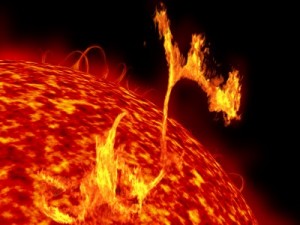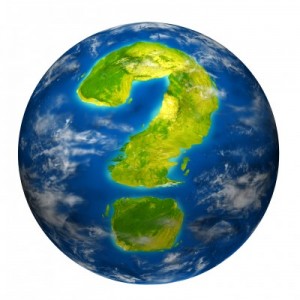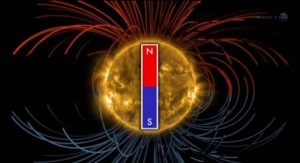
Every 11 years, the Sun’s magnetic poles reverse, and this big event will take place within the next 2 to 3 months. Courtesy of NASA
Within the next two or three months, the Sun’s magnetic north and south poles will flip. Don’t worry – it won’t end time or destroy the Earth … the reversal of the Sun’s magnetic poles is a big event, but it happens every 11 years.
The coming reversal will mark the midpoint of the current Solar Cycle 24, and half of “Solar Max'”will be behind us, but half is yet to come.
Trickling Down To Earth
During polar field reversals, the Sun’s polar magnetic fields weaken, they then go to zero, and emerge again with the opposite polarity. This is a regular part of the solar cycle, and actually, this happens on all the planets. When the Earth’s magnetic poles reverse, the same thing happens to us (just not as hot). No human has ever been alive when the Earth’s poles have flipped, but we can learn about this process by studying the Sun.
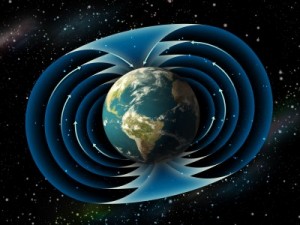
The Earth’s magnetic field reverses like the Sun’s, but we have much to learn about this phenomenon.
As the Earth orbits the Sun, we are exposed to its vacillating radiation and magnetism coming from its surface, and this stirs up “stormy space weather” around our planet that trickles down as climate change and the increase in natural disasters.
This is what we are witnessing today.
A Big Deal
A reversal of the Sun’s magnetic field is a very big deal. The Sun’s magnetic influence extends billions of kilometers beyond Pluto, and changes to the Sun’s polarity ripples all the way out into interstellar space. These ripples influence every planet in our solar system.
Get Ready For The Flip
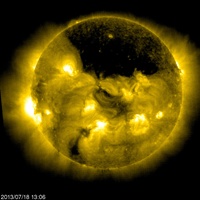
Coronal hole on the sun moving toward the Sun’s North Pole showing the change in polarity. NASA, July 18, 2013.
The Sun’s north pole has already changed polarity, and the south pole will soon catch up. Soon, however, both poles will be reversed, and the second half of Solar Max will be underway.
The Sun’s two hemispheres are out of synch right now, but when they finally flip, the worst will be over. In time, the Sun’s magnetic field will reach a new equilibrium, but for us, here on Earth, we’ll have another 5 1/2 years of the Sun’s super warming … keep your sunglasses handy.
